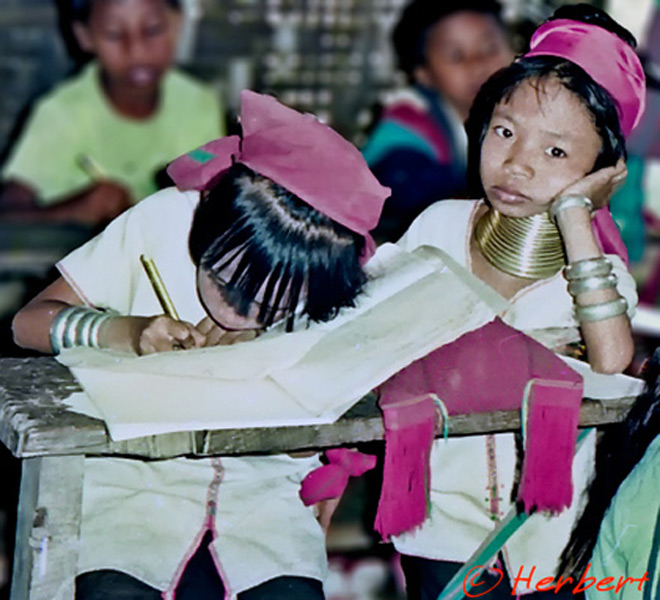
Location: Mae Hong Son, Thailand (19� 18' 14? N, 97� 58' 38? E)
Date: 13 August 1995; 2.10pm
Camera: (analogue) Olympus Mu on negatives and scanned
There is a sub-tribe of the Karen tribe living in the Kayah state in eastern Myanmar known as Padaung. They are more well-known as the �Long Neck� tribe as the women supposedly spot �long necks� (or giraffe women). They don�t actually have long necks � they wear rows of brass rings around their necks since young; these rings squash the vertebrae and collar bones as they grow older rather than stretching their necks. They also wear rings around their arms and legs. The reason that they do so is to look like a dragon- their ancestor. Legend has it that the Padaung people are the product of the impregnation by the wind of a beautiful long neck dragon. In Thailand, there are only a handful of Padaungs who are refugees fleeing the persecution by the Myanmese in the 1970�s. There live in the north, bordering Myanmar in villages which are dubbed �human zoo�. Such villages are set up as �tourist attractions� managed by Thais who also provide them protection. Tourists are brought to the village, paying an entrance fee, to see and photograph these ladies. There are allegations that the Padaungs are in fact imprisoned by the Thais that manage the villages and young girls are forced to adopt the ring tradition. While these may be so, the set up does provide the refugees a measure of certainty and protection from eviction (I am sure the �managers� are influential people) which they may not enjoy otherwise. Furthermore they do make a living from the visitors as well as selling whatever handicraft they made. I, personally cannot make a judgment if this is bad or otherwise.